
Wetlands International launches new online portal for the world’s latest data on waterbird populations
-
Asian Waterbird Census
-
International Waterbird Census
-
Species
On 29 June 2021, Wetlands International launched the Waterbird Populations Portal (WPP), an online interactive platform containing the most recent data on the status and distribution of the world’s waterbird populations. A well-attended global webinar was organised for the occasion, with contributions from several acclaimed panellists from the conventions and flyway frameworks and Environment Agency Abu Dhabi.
WPP to catalyse conservation action for waterbirds and their habitats
Globally, there are over 870 waterbird species that serve various important ecosystem services and functions, ranging from the majestic Sarus Crane Grus antigone that stands at over 1.5m tall, making it the tallest flying bird inhabiting wetlands and rice fields in South and South east Asia and Australia, to the diminutive White-winged Flufftail Sarothrura ayresi, restricted to a few areas in wet grasslands in east and southern Africa, both globally threatened species. Conservation of all these species requires easily accessible information on their status and trends to help governments and people take action.
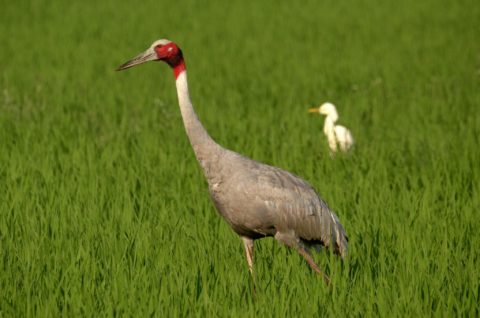
The open-access Waterbird Populations Portal (WPP) provides the latest size estimates and trends for over 2,500 populations of 870 waterbird species and presents the latest 1% threshold of each population. The 1% threshold has been used to select 867 Ramsar Sites representing over 35% of total sites listed world wide to date (these represent sites that meet Criterion 6 of the Ramsar Convention on Wetlands).
The Portal is accessible to national or local authorities for wetland site managers to shortlist relevant populations with their 1% population thresholds, to check against available information and identify potentially internationally or nationally important wetlands. The Portal thus supports governments worldwide to develop and implement management action of wetlands and conserve waterbirds to meet global targets set under the Ramsar Convention on wetlands, related biodiversity-related conventions and flyway agreements and initiatives. Besides formal designations, the Portal offers opportunities to support the identification of Important Bird Areas & Key Biodiversity Areas worldwide. The Portal is widely used by bird and wetland researchers, conservation NGOs, industry and others.
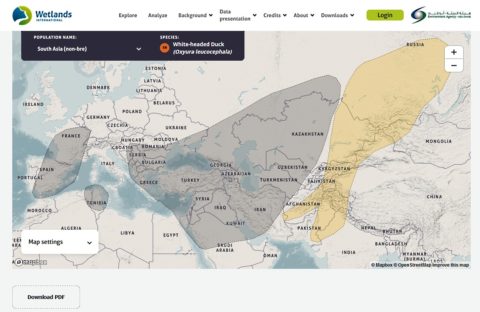
“Wetlands International is very pleased to work with governments, partners and experts around the world to provide the latest information on waterbirds in this newly launched global Waterbird Populations Portal to support management of our wetlands and conservation of these beautiful and important species,” says Jane Madgwick, CEO, Wetlands International.
A global webinar and panel to launch the WPP
The webinar was organised on 29 June 2021 with a lively international panel with representatives from the Ramsar Convention on Wetlands, the Convention on Migratory Species (CMS), and the Convention on Biological Diversity (CBD), African Eurasian Migratory Bird Agreement (AEWA), East Asian – Australasian Flyway Partnership (EAAFP), and Western Hemisphere Shorebird Reserve Network (WHSRN), representing major users of the new Portal. Also present was the Environment Agency Abu Dhabi, that provided generous support for the development of the Portal.
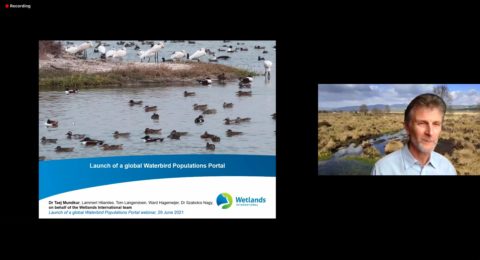
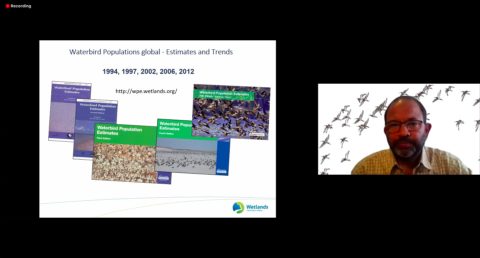
“The new Portal makes access of key waterbird information much easier for management authorities such as the Environment Agency of Abu Dhabi, and will certainly help us to prioritise sites for consideration as new Ramsar Sites,” stated HE Dr. Shaikha Salem Al Dhaheri, the Secretary of the Environment Agency of Abu Dhabi.
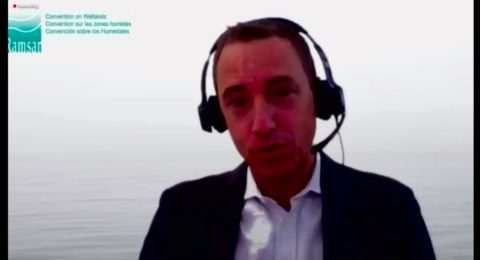
“Data on waterbird populations provided through the WPP is crucial to support the 171 Contracting Parties of the Convention in designating Wetlands of International Importance, also known as Ramsar Sites. Effective management of this global network of protected areas that currently includes 2,422 sites is a key commitment under the Convention, and a direct, tangible contribution to biodiversity conservation and sustainable development.” Marta Rojas Urrego, Secretary General, Ramsar Secretariat.
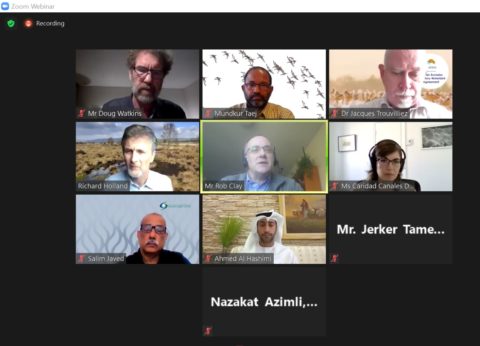
Waterbirds worldwide are trying to adapt to ongoing rapid changes in climate as well as transformations to landscapes and habitats driven by human development, the panel and audience called for information in the Portal to be updated on a regular basis and for resources to be effectively allocated towards this. They reiterated the critical need for this information to reflect our latest knowledge on the status and trends of populations so as to continue to support conservation of waterbirds and wetlands and meet needs of diverse data users world wide.
A recording of the webinar can be found below:
For further information:
Waterbird Populations Portal – https://wpp.wetlands.org/
Lydia Meester, [email protected]
Dr Taej Mundkur [email protected]
Information on the Waterbird Populations Portal
The new and improved open access Waterbird Populations Portal features an interactive interface with easier access to key information on the latest size estimates and trends of over 2,500 populations of over 870 waterbird species and 1% threshold of each population. It also features an analysis section that will allow users to generate and use a variety of their own information summaries in graphic form. It provides links to the 160 threatened waterbird species as per the IUCN Red List of Threatened Species. An added feature will provide population level boundary maps for all the world’s waterbird populations. Maps are included for over 300 populations at the time of the launch and will progressively updated to include all other populations over the coming year.
The Portal is used by national or local wetland authorities or site managers to access a shortlist relevant populations with their 1% population thresholds, to check against available information and identify potentially internationally or nationally important wetlands. This will help prioritisation of sites for legal designation or protection.
The Portal is especially designed to provide contemporary 1% population thresholds of all waterbird species that are required by Contracting Parties for the designation of Wetlands of International Importance (Ramsar Sites) under the Ramsar Convention on Wetlands. This information also supports identification of flyway network sites under the African Eurasian Migratory Bird Agreement (AEWA) Action Plan, the Central/West Asian Site Network for Siberian Cranes and Other Waterbirds established under CMS, East Asian – Australasian Flyway (EAAF) Site Network established under the EAAF Partnership, under the European Union’s Birds Directive and the EMERALD Network under the Convention on the Conservation of European Flora and Fauna, and for shorebirds under the Western Hemisphere Shorebird Reserve Network. Additionally it provides a criterion to increase the number and area of these internationally important sites contributing to achieving the protected area target of the Convention on Biological Diversity.
To ensure the latest information is available, regular updating of the waterbird population estimates has been requested by resolutions of the Ramsar Convention to support its Criterion 6 and priorities of the Ramsar Strategic Plan 2016-2024 (Target 6), Convention on Migratory Species and links to The Strategic Plan for Migratory Species 2015-2023 (Goal 3), Council for Arctic Flora and Fauna (CAFF) Arctic Migratory Birds Initiative (AMBI) Work Plan 2019-2023 (Objective 4), AEWA Strategic Plan, East Asian – Australasian Flyway Partnership (EAAFP) Strategic Plan and others.
The new portal, replaces the Waterbird Population Estimates Portal that was launched at the Ramsar Conference in 2012 and was intensively used by governments and conservationists around the world over the last decade.

